The iceberg capital of the world
 Qajaaq Ellsworth
Qajaaq EllsworthIcebergs coming down from the Davis Strait often get stuck just north of the Arctic Circle in Qikiqtarjuaq, where people drink the purest water in the world.
 Qajaaq Ellsworth
Qajaaq EllsworthOur community is not large, but as people, we are able to do and accomplish a lot, said Billy Arnaquq.
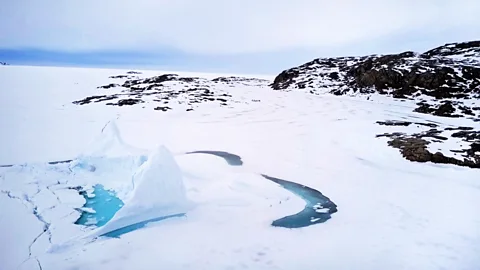 Qajaaq Ellsworth
Qajaaq EllsworthBefore moving to Qikiqtarjuaq with her family in 1980, Mary Killiktee had never seen so many icebergs all at once. Now, she is the first female mayor of this tiny hamlet in Nunavut, Canada, and still can’t get over the geometric beauty of the landscape. “How they are shaped is just amazing,” she said of the icebergs. “They are here all year-round for us to see. It’s part of us”.
Few more than 500 people live in Qikiqtarjuaq, and according to Killiktee, they all know each other. The hamlet sits on a small island also called Qikiqtarjuaq (literally ‘big island’) right above the Arctic Circle. It's one of the Nunavut communities closest to Greenland, at the entry point of the Auyuittuq National Park.
Icebergs stop here on their way south from the Davis Strait, hindered by the cape and by shallow waters. They shape the landscape and culture of this community, which has managed to preserve its own traditions and language, and offer the purest water in the world.
 Qajaaq Ellsworth
Qajaaq EllsworthWhen school is closed, most families leave Qikiqtarjuaq and head to their getaway cabins (or tents), which they can reach via snowmobile in just two or three hours from the hamlet. In summer, when the ice is thin and unsafe to ride, families travel by boat.
Camping is a key part of life in Qikiqtarjuaq. There is even a specific word for staying out from spring to summer: ‘upirngik’. “I used to do it with my mother and my siblings,” said local resident Daisy Arnaquq. “That is how I know this land”.
Daisy and her husband Billy have a cabin in Kangiqtukulu, a name that means ‘nice little inlet’. It was built by Daisy’s father, and the couple often spends time there with their grandchildren, hunting and fishing. They also host climbers and adventurous tourists on their way to the nearby national park.
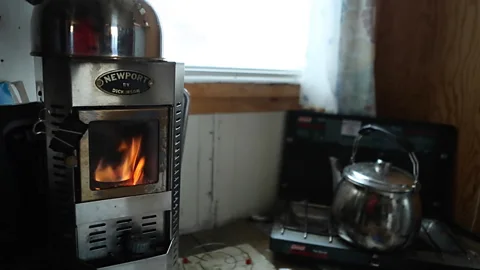 Qajaaq Ellsworth
Qajaaq EllsworthThe Inuit way of life, it’s changed a lot… We’ve moved from igloos to microwaves in less than 60 years, said Peter Irniq.
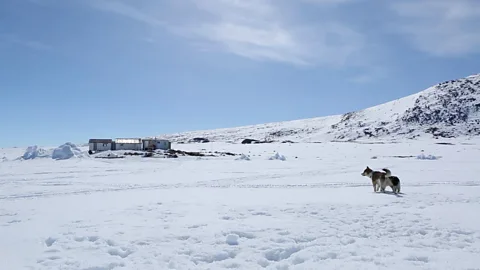 Qajaaq Ellsworth
Qajaaq EllsworthInuit across the world – in Greenland, Alaska, Canada and Russia – have survived thousands of the most brutal and grim Arctic winters. But how have they done this? Irniq, who grew up living in an igloo for the first 11 years of his life, claims to have the answer:
“Naglingniq: I always said within the course of my own teaching career to both Inuit and non-Inuit, that our ancestors had a lot of naglingniq, a lot of love and comion to survive to this day,” he said. “We share what we have with other Inuit. This is how our ancestors survived hundreds of thousands of years ago. So our Inuit culture, we say that we always help each other to survive for our future.”
While 'naglingniq' is an Inuit word that refers to the love, comion and respect between Inuit families and fellow Inuit, the Inuit people also use the word to show their comion for others around the world. “When we see that there are world disasters such as 9/11, we always said, for example, ‘New York naglingniq’,” Irniq said.
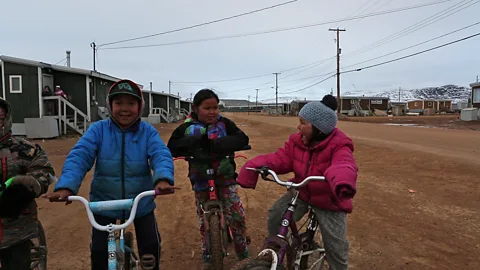 Qajaaq Ellsworth
Qajaaq EllsworthIn Qikiqtarjuaq, most people speak Inuktitut; English is not used as much as in bigger Nunavut communities.
Inuktitut is not a single language, though. With 26 different dialects in the Nunavut territory alone, this Inuit language is a spectrum of distinct speech forms that vary between different communities.
These different dialects developed when the Inuit lived in small isolated camps, until about 50 years ago. More recently, however, the Inuit language has begun to merge into one dialect as a result of the establishment of larger, more permanent Inuit communities.
 Qajaaq Ellsworth
Qajaaq EllsworthMany of the words in the Inuktitut language cannot be directly translated into English, as they refer to unique aspects of the Inuit way of life. For instance, there are no words for ‘hello’. Instead, Inuit greet each other with a smile. Qungap pagit, a phrase that has evolved from this universal Inuit greeting, literally means ‘I smile at you’.
“Qungap pagit is the way we've always greeted each other, and that's why we always smile to greet each other. That says a lot about people making friends with you and wanting to meet you. The Inuit are extremely friendly people,” Irniq said.
Similarly, in Qikiqtarjuaq people don’t say ‘no’; they use their nose. “I just use my face,” Killiktee explained. “It’s a signal saying ‘I don’t know’ or ‘no, I can’t’. We use that a lot.”
The language, together with the icebergs, shape the identity of the hamlet, which its inhabitants fondly call ‘Qik’.
 Qajaaq Ellsworth
Qajaaq EllsworthIt is the best water of all waters… iceberg water, said Allen Kooneeliusie, a long-time local who moved to Qikiqtarjuaq when residents still lived in qammaq, or stone houses.
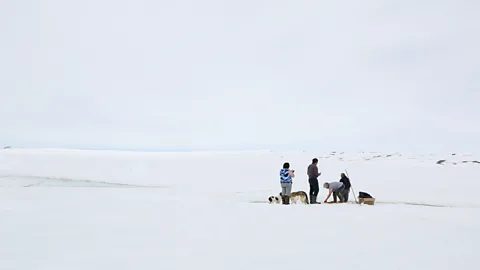 Qajaaq Ellsworth
Qajaaq EllsworthThe icebergs surrounding Nunavut have been formed over thousands of years. As snow falls, the snow underneath gets compacted over time, turning its soft texture into a crystal-like ice sheet. From this ice sheet, glaciers are born – from which icebergs break free and float away. Due to strong currents, many icebergs from other parts of the Arctic end up in Nunavut, making it the iceberg capital of the world.
“Ice and air, that’s essentially what it is. And the water that comes from it is very pure, starting thousands of years ago, and it would have very little bacteria growing in it,” explained Derek Mueller, a glaciologist from Canada’s Carleton University .
Iceberg water lacks certain minerals that aquifer and groundwater gain as they through the earth, making it especially pure. People in Qikiqtarjuaq collect it directly from the icebergs.
“It’s just the way we make it. That’s part of the culture,” Killiktee said. “That’s where the families that live around the icebergs used to get their water. We have to respect that and we are still doing that. Chopping ice, making ice out of it, drinking, melting it. Yeah.”
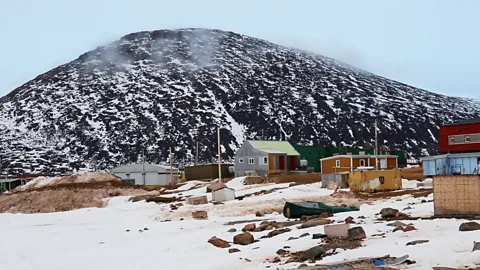 Qajaaq Ellsworth
Qajaaq EllsworthWith modernisation, many elder Inuit are worried that their traditional way of life is disappearing. As a result, some Inuit have taken it upon themselves to try to preserve the Inuktitut language and the Qaujimajatuqangit, the Inuit traditional knowledge.
“When we were going to residential schools in the 1950s and ‘60s, we weren't allowed to speak [Inuktitut]. We were always told by the teachers and the system and the Canadian government that we were to learn to speak and write in English” Irniq said. “But we still speak Inuktitut to each other to keep the language alive, and many of our young people are speaking Inuktitut.”
Arnaquq and other Inuit cultural activists offer programmes to teach the younger generations how to live ‘on the land’ like their ancestors did. In these courses, young Inuit learn traditional survival skills, like how to build an igloo, how to survive the gruelling Arctic winters that can get as cold as -60C and how to properly skin and butcher a caribou for meat.
“Our traditional language is very strong here, young and old. The strength of our traditional knowledge is a great reason to love our community,” Killiktee said.
 Qajaaq Ellsworth
Qajaaq EllsworthOur traditional language is very strong here, young and old. The strength of our traditional knowledge is a great reason to love our community,” Killiktee said.
Shortly after filming, Allen Kooneeliusie ed away. The family has given BBC Travel permission to tell his story.
(Credit: Videos have been edited by Shani Tsur, Paulina Cachero and Keira Edgett, who also helped with the research.)
